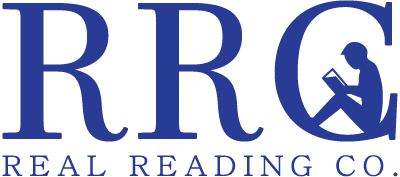Frankly, we don’t think there’s a better curriculum for teaching reading and spelling in a homeschool setting than Reading and Spelling Pure & Simple!
The lessons in our program are:
- phonics based
- tailored for simplicity and ease of use
- designed for one-on-one teaching (the best form of reading instruction)
- effective with students of all ages
- comprehensive (beginner to advanced)
- focused on reading, spelling, and comprehension
- based on low-stress teaching methods and positive reinforcement
- structured so that minimal preparation time is required of the parent-instructor
Parents of homeschool children tell us that their students love the lessons and often ask when they can do the next one. There is an excitement that bubbles up when students learn to read! And since the curriculum does not permit guessing at words, students become real readers. We often hear from parents that THEY become better readers and spellers, too, in the process of teaching the lessons to their children.
Everything needed to teach reading and spelling is supplied in this book. All of the lesson planning has been done for you, too.
The program consists of 90 lessons, separated into 4 units. Parents keep track of the lessons on a progress chart provided in the book. Seeing his or her achievements recorded on a chart is rewarding and motivating for a student. Since the lessons are taught at the student’s pace, the student can relax. The goal is mastery, not speed. A student will be able to read 59 words after completing Lesson 1. The sense of accomplishment inclines students to look forward to learning more patterns and mastering more words in the next lessons.
If your child is reading well and you are happy with the reading curriculum you are now using, by all means, keep using it. Again and again, though, we encounter families that have a student who isn’t adequately progressing—a child who “hates” to read, reads hesitantly, or refuses to read more than the minimum required. For whatever reason, the current reading curriculum is not clicking. In these cases, we believe Reading and Spelling Pure & Simple will help. (In fact, such are the students for whom we originally wrote the lessons.) Everything expected will be directly related to actually learning how to read and spell and comprehend word meaning. There is no “busy work.” The deliberate simplicity of our lessons makes the learning seem effortless.
“Wow, just wow. I picked this book up and wow. Clean, organized, simple, and EVERYTHING is in this ONE book!”
“It is completely adaptable for any age or level. I am learning new definitions as well. One book works for all four children and the same book will work until all read and spell fluently. One book! And the best part is that my children enjoy it too.”
“The beauty of the reading and spelling combine is fantastic, and I cannot tell you how much I love that the vocabulary is built in – and in a way other programs just don’t. (And, I have used other programs). What other method would have exposed my granddaughter not only to the word ”tam” but also given us the opportunity to discuss culture and various traditions of other countries (since a “tam” is a Scottish hat that opens up the opportunity for some great discussion and learning for us). I thank God that I found this program and am grateful that I can use it with both my granddaughters.”
“This book not only has helped my daughter be confident in reading but has added a vocabulary richness to the world around her. She gets excited when she recognizes words she has learned in books, cleverly worded billboards, the newspaper, …”
“My son had completed sixth grade but could only read at a second-grade level. I started doing the lessons with him over the summer. When he went back to school in the fall, the teachers noticed how much he had improved (his test results showed that he had jumped 4 grade levels with only a few months of lessons)! He’s a totally for the kid today – he actually enjoys school and is making A’s on his report card. I can’t say enough good things about this program.”
“This book has been an absolute blessing for my 13-year-old autistic son! With all Deede’s tips and guidelines outlined clearly in this book, we have taken a nonverbal non-writing boy to writing and reading for the first time. I highly recommend this book!”
Timeline for Completing Lessons
As a homeschool teacher, you have the freedom to pace the lessons according to your student’s age, abilities, and attention span. Set aside time every day to work on a lesson. Remember, mastery is always the highest priority, so plan on moving at a pace that allows your student to fully achieve the desired outcome. Your speed in progressing through the book will also depend on your schedule. Again, daily lessons are best, but the program will be effective even if not done daily. Whatever the pace, be sure your student breaks any habit of guessing at words.
We recommend that a parent aim to complete up through Lesson 55 for an elementary student. Getting to this point in the program will equip most students to confidently read and spell practically any reading assignment encountered in elementary school. Students will usually be reading and spelling at or above grade level after completing Lesson 55.
Before a student starts middle school, he or she will need to complete all 90 lessons. If it takes one full year, working daily to do this, then do take one full year! If it takes three semesters, that’s fine, too. The point is, your student needs to master all of the patterns in all of the words. If you take a break in the summer, begin in the fall with a lesson a few lessons back from where you left off. The review will be invaluable.
In public school settings, teachers may have time to teach only one lesson from Reading and Spelling Pure & Simple per week. (Some teachers manage to fit in two lessons per week.) The advantage of homeschooling is that a parent/instructor can administer these lessons at least once a day and can work through the lessons at a quicker pace than a classroom generally is able to do. There are only 90 lessons to master. Once these are completed, you will have created a strong, confident reader and speller.
Some lessons might take longer than a day, depending on your student. Some lessons might fly by so fast (with mastery) that you can do three lessons in a day. If your student needs more time than has been suggested, let him or her have the time!
Remember, every child is different. If your child is a slow reader, he may be overcoming the habit of guessing at words or have some form of a diagnosed or undiagnosed learning disability. Relax! Your student will soon know how to read anything he needs to read or wants to read.
This program is not meant to squeeze students into a mold. Rather, Reading and Spelling Pure & Simple is structured to ensure that each child can work to his or her own potential and be successful.
Upon finishing all 90 lessons, you and your student together will read aloud and discuss a selected book. Be sure that the material is interesting and challenging. Your student will be able to read and comprehend the material with ease.
The goal for each lesson is relaxed and automatic reading—without hesitation or stress by the student. Ask your student if he needs to review a word list or a whole lesson. What sounds confident to the instructor’s ears may not feel confident (on the inside) to the student. (Remember the lessons are designed to be easy, assuming previous lessons have been mastered). Enjoy learning the patterns of the English language and helping your student expand his vocabulary.
Parents whose children are attending public, private, or a public charter school generally teach our lessons during the summer, in the evenings, or on weekends. Usually the early lessons result in immediate, noticeable improvement. Elementary students will often reflect phenomenal improvement before—but definitely by—Lesson 55. When a student has gotten to that level, he will know a great deal of information, such as all of the syllables and words that use the short and long sounds of the five basic vowels (a, e, i, o, and u); the four sounds of the oo spelling (moon, book, door, and flood); and the a spelling with words that use the |ä| and |ô| sounds (car, all). He will know all of the 21 basic consonant sounds and most of the digraphs (ch, sh, th, and wh). This bank of knowledge will enable the student to read and spell most of the words he encounters in elementary curricula. Approximately 70 to 75% of English words are built using these short-vowel and long-vowel syllable patterns.
Students in middle school or higher (junior high, high school, college, or adults) will typically show immediate improvement early on. At higher grade levels, they will be required to read and spell more complex words and will need to complete through to Lesson 90 for complete proficiency. Total mastery will become apparent with the final assignment, when you and your student will read aloud and discuss a selected book together.
Reading is foundational to everything your student will be required to do in life. The further along in the lessons he gets, the better. Remember, you only have to complete 90 lessons (77 pages of material) for your student—whatever his age—to read and comprehend almost anything in print. As a homeschool parent, you can make an executive decision to have your student attain as much reading and spelling skill as you choose. If you are working daily, you might be surprised by how far your student will get in these lessons in a short time period.



